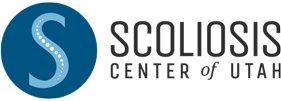Blogs
How to Relieve Thoracic Scoliosis Pain Naturally
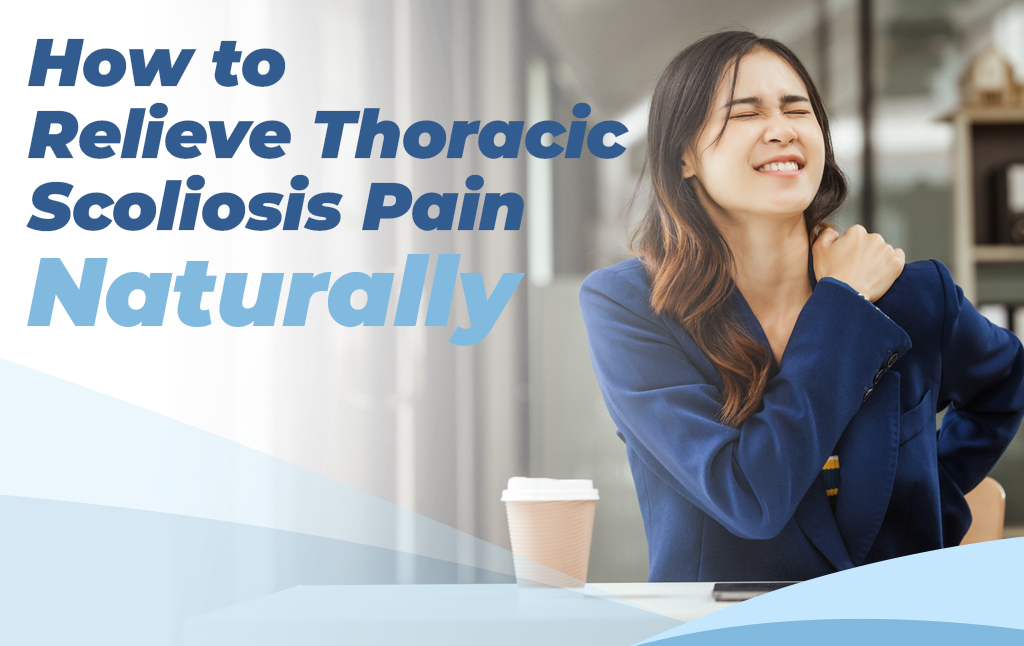
When it comes to any type of long-term sustainable scoliosis pain relief, this can only be achieved through treating the condition. Pain is a symptom of scoliosis, so to impact pain, the condition, as its underlying cause, has to be addressed.
Thoracic scoliosis pain is generally focused in the middle/upper back and chest, and conservative treatment provides a more natural treatment option than surgery. As the only spinal section that attaches to the rib cage, chest and rib pain can develop alongside the development of a rib cage arch.
There are three main spinal sections, and as scoliosis symptoms are partially shaped by curvature location, let’s discuss the unique roles of each section.
Spinal Sections
The main sections of the spine include the cervical spine, thoracic spine, and the lumbar spine, and the health of each section is shaped by its healthy curve type and alignment.
The cervical spine refers to the neck, and the unique roles of the cervical spine include supporting the head, facilitating the neck’s range of motion, and acting as the bridge between the brain and the rest of the body.
If the cervical spine loses its healthy curve, it can cause forward head posture and stain the neck and shoulder muscles.
The lumbar spine refers to the lower back and has to support the weight of the torso, the thoracic and cervical spinal sections above, and its vertebrae feel the effects of strenuous movements such as bends and lifts.
If the lumbar spine develops an unhealthy curve, it can cause muscle, back, and nerve pain and disrupt posture, movement, and balance.
Thoracic Spine
The thoracic spine refers to the middle/upper back; it’s the largest spinal section and the only section that attaches to the rib cage.
The thoracic spine provides structure for the chest and abdomen, facilitates flexion, rotation, and extension in the upper body, protects important organs, and anchors the rib cage.
A diagnosis of thoracic scoliosis means an unnatural sideways-bending and rotating spinal curve has developed in the middle/upper spine, and most of the condition’s direct effects will be felt in the areas closest to the affected spinal section.
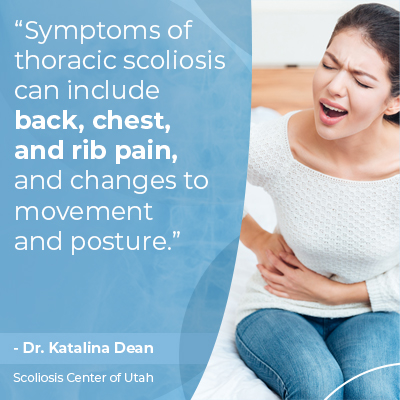 Symptoms of thoracic scoliosis can include back, chest, and rib pain, and changes to movement and posture.
Symptoms of thoracic scoliosis can include back, chest, and rib pain, and changes to movement and posture.
Thoracic Scoliosis Pain
Scoliosis isn’t painful for everyone. Pain isn’t considered a common symptom of childhood scoliosis; the condition doesn’t become compressive until skeletal maturity is reached and the spine is no longer experiencing the lengthening motion of growth.
Once growth has stopped, the spine and its surroundings become vulnerable to the effects of uneven pressure, and this can involve the thoracic spine and its surrounding muscles and nerves.
So thoracic scoliosis pain can include muscle pain due to a muscular imbalance, back and chest pain due to the spine’s unnatural curve and twist, and nerve pain due to compression.
Nerve pain can radiate throughout the body but is commonly felt in the extremities.
Thoracic Scoliosis Muscle Pain
Scoliosis introduces uneven forces to the spine and body; its main visual effect is disrupting the body’s overall symmetry.
As an asymmetrical condition, thoracic scoliosis can also affect the symmetry of the thoracic spine’s surrounding muscles.
A muscular imbalance is a common effect as the spine’s unnatural bend and twist makes muscles on one side of the spine work harder to support it, while muscles on the other side can become weak from lack of use.
A muscular imbalance can cause muscle pain due to tight and overused muscles and/or weak and stretched muscles. Muscle spasms can be painful and disruptive, and the best remedy for scoliosis muscle pain is improving the spine’s surrounding muscle balance and strength.
Thoracic Scoliosis Back, Chest, and Rib Pain
The underlying structural nature of scoliosis means the condition involves a structural abnormality within the spine itself, so this is the underlying cause of scoliosis back pain.
Not only can the spine’s surrounding muscles become unbalanced, the spine is unbalanced, and as a progressive condition, the nature of the curve is to get larger over time, and this means the spine is becoming more misaligned.
As the thoracic spine attaches to the rib cage, its unnatural bend and twist can disrupt the position of the rib cage, causing one side to protrude excessively and form a rib cage hump.
In adults for whom scoliosis is compressive, back, chest, and rib pain can range in severity but can become chronic and debilitating if severe and/or is left untreated.
Scoliosis back pain is often described as a feeling of being pulled down, or pulled to one side, and it can involve feelings of excessive tightness in the back.
Chest and rib pain is caused by compression, asymmetrical postural changes, and joint stiffness.
Thoracic Scoliosis Nerve Pain
The spine contains 31 pairs of spinal nerves, so if an unnatural spinal curve compresses its nerves within, or where they exit the spine and branch off throughout the body, a number of symptoms can develop.
It’s said that nerve-related back pain can be the most debilitating, and depending on the location of the compressed nerve, it can be felt in different areas.
Nerve pain can be felt anywhere along a nerve’s pathway, which is why pain that radiates into the extremities is a common symptom of adult scoliosis.
Nerve pain can involve sharp shooting sensations, electric shock-like sensations, tingling, numbness, and can range from mild to severe depending on the degree of nerve compression/damage.
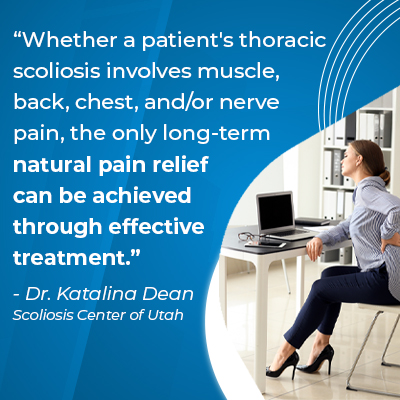 Whether a patient’s thoracic scoliosis involves muscle, back, chest, and/or nerve pain, the only long- term natural pain relief can be achieved through effective treatment.
Whether a patient’s thoracic scoliosis involves muscle, back, chest, and/or nerve pain, the only long- term natural pain relief can be achieved through effective treatment.
Nonsurgical Scoliosis Treatment for Natural Pain Relief
While there are always prescription pain medications that can help with short-term pain relief, the effects are only temporary, and medication is only addressing the pain, not its cause: the condition itself.
Here at the Scoliosis Center of Utah, patients benefit from having access to a level of chiropractic care that only one percent of the world’s chiropractors can offer: the power of Chiropractic BioPhysics® (CBP).
Chiropractic BioPhysics applies proven scientific principles to the identification and treatment of joint/alignment issues; the underlying cause of pain and mobility issues are determined and addressed through the application of a variety of chiropractic techniques and adjustments.
CBP applies principles of geometry, anatomy, physiology, physics, and biology to restore the spine’s balance and stability.
If manual adjustments can work towards realigning the spine on a structural level, this can restore the thoracic spine’s healthy curve, improve the spine’s balance and stability, and address the underlying structural cause of the thoracic scoliosis back and chest pain.
ScoliBalance® Therapy
When it comes to muscle and nerve pain caused by thoracic scoliosis, a curvature reduction will also help these issues by reducing pressure, but another focus is on improving the spine’s surrounding muscle balance and strength through our complete physiotherapeutic approach known as ScoliBalance®.
ScoliBalance® is a customized exercise-based program that can help slow/stop progression, increase the spine’s surrounding muscle strength, address any related muscular imbalance, improve posture, the spine’s flexibility and alignment, and reduce pain long term.
The use of mirror image exercises are key as they teach postural awareness; patients are taught how to hold their spines and bodies to counteract their curve and hold treatment results for 3-dimensional correction.
Postural remodeling is an important part of leading a spine- and scoliosis-friendly lifestyle during and after treatment.
Corrective Bracing
The ScoliBrace® is an additional facet of a more natural nonsurgical treatment approach offered here at the Center, and as the world’s most advanced corrective scoliosis brace, it can help reduce curves and stabilize the spine by pushing the spine into a straighter alignment.
Together, chiropractic care, ScoliBalance® therapy, and corrective bracing work together to impact scoliosis on every level for long-term sustainable pain relief.
Conclusion
There are different ways to address a patient’s scoliosis pain, and while medical treatment can involve prescription pain medication and surgical intervention, conservative scoliosis treatment offers a less invasive and more natural response.
Scoliosis can develop in any of the spine’s main sections, or in more than one as a combined scoliosis; thoracic scoliosis develops in the middle/upper back.
Thoracic scoliosis is more likely to be painful for adults due to compression, and thoracic scoliosis pain can involve the muscles that surround the spine, radiating pain due to nerve compression, and back and chest pain.
A common effect of thoracic scoliosis is the development of a rib cage arch caused by the thoracic spine’s unnatural bend and twist pulling on the rib cage, causing one side to protrude excessively, so in addition to back pain, chest and rib pain can also be symptoms of thoracic scoliosis.
Scoliosis can be mild, moderate, or severe, and the more severe a condition is, the more likely it is to be painful and cause noticeable effects.
When it comes to natural pain relief, this can be achieved through proactive conservative treatment that works towards restoring the spine and body’s alignment, balance, and stability; here at the Center, this involves the application of Chiropractic BioPhysics®, ScoliBalance® therapy, and the 3-dimensional corrective ScoliBrace®.
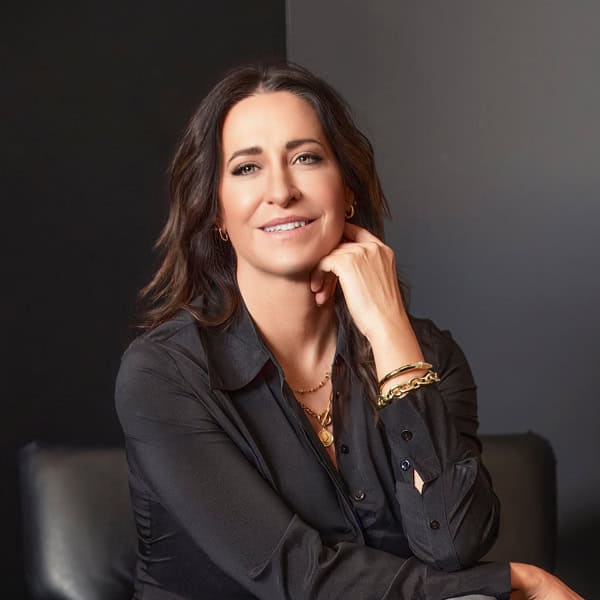
Dr. Katalina Dean
Dr. Katalina Dean is the founder and clinical director of Scoliosis Center of Utah, in Midvale, UT. Her team specializes in posture correction, spinal rehabilitation, and non-invasive scoliosis care and bracing.
Call Today
Do You Qualify for Care?
Schedule an Appointment Below
